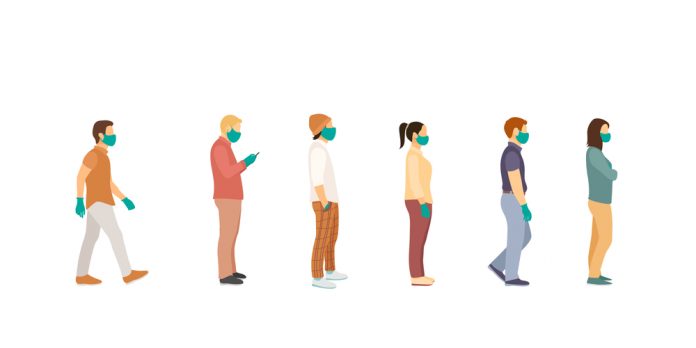Business Patterns are beneficial concepts. The queue is one of them that is used in nearly any business today, especially in call centers. You remember this when you hear some music and an iron voice telling you: “Please stay on the line…” Why are queues so important, and what do they solve for your business?
Christopher Alexander is “the father” of the pattern language, a book describing a common-sense building approach using patterns. In this book, he elaborates 253 building patterns, solutions for problems that repeatedly occur in our environment. Once such a solution seems to work, it can be used many times
In business, there are also many patterns, and these are useful because they help you solve issues where others have been dealing with before.
Understanding with examples
An example of such a pattern is in the queue.
The idea behind a queue is not to let people wait but to organize activities most efficiently. There are many examples:
- The line that is used in the call center
- The queue where this article ends after I have submitted it
- The queue for clients waiting for a medical treatment
- The queue in front of the post officeThe more efficient the organization behind the queue, the shorter the queue. If there hadn’t been a queue, the organization would be inefficient. The person would be waiting for clients to show up, and that costs money. When the queue grows out of proportion, the organization can no longer handle the number.
What solves the queue?
The queue solves the resource organization behind the queue. Once you have set up a queue, you can analyze queue “entries” and find different requests your organization needs different specialists or resources.
One of the fastest and most cost-effective methods for a company to improve operational efficiency and extract more income from current real estate is to have an efficient and well-managed queue. Because of its proven ability to reduce customer walk-away, increase revenue per square foot, stimulate impulse sales, and improve the overall customer experience, queue management – the process of efficiently moving customers in, through, and out of waiting lines – is quickly becoming an essential element of best practices in many industries.
Queuing
There are two fundamental queuing concepts that are often used in the corporate world. Customers physically queue in lines that are created by stanchions, which are typically retractable belt posts. Linear queues, which follow the “first come, first served” service principle, may have numerous lines, as in grocery shops, or single lines, as in most banks and financial institutions. Linear queuing techniques guarantee the quickest possible service by minimizing the time spent waiting for each client to be serviced, and are therefore often employed in situations where service procedures are relatively short.
Electronic Queuing System
An electronic queuing system may be used to optimize customer flow and increase the efficacy of linear queuing systems. Electronic queuing systems have been shown to improve service efficiency by up to 35%, resulting in shorter average wait times. Furthermore, some systems have strong media capabilities that keep consumers informed and amused, decreasing perceived wait times and improving the overall customer experience.
Virtual Queuing
Virtual queuing, the second queuing concept, enables consumers to wait for a service without having to stand in a line. Customers often register for services using a device such as a kiosk or a ticket printer. They may then participate in “active waiting” activities such as browsing or shopping in the surroundings, watching television, or just resting while waiting for their name or ticket number to be called. Virtual queuing is ideally suited to settings where service durations are longer, such as healthcare, but it is also utilized in hospitality and food service.
Your Queues Will Cover Their Own Costs
One of a store’s most significant additional income opportunities is directly in the checkout line. Using an in-line merchandising system, a profit centre may be created inside the queue’s current floor area. Some stanchions come with merchandising panels that can be simply connected to the queuing stanchions. Installing an in-line merchandising system may result in an instant boost in impulsive purchases.
Furthermore, queue merchandising keeps consumers busy while they wait, decreasing perceived wait times, boosting goodwill, and improving the customer experience.
These three queue management principles—queue layout, signage, and in-line merchandising—will help you optimize customer flow and, as a result, your bottom line. Small adjustments may have a significant effect on how your customers view your company. Queue management, when done correctly, increases efficiency, increases revenue, and improves the customer experience.

